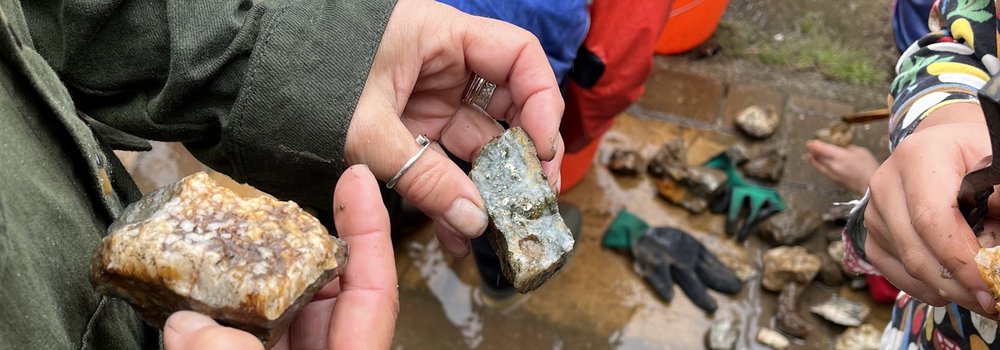The weather was terrible, the forecast was for worse - but we'd spent two hours running around the site setting up, unloading 60 quiches and vegetarian and vegan rolls, booted up the Pi with the USB microscope, arranged lots of mineral samples with ID cards and made sure the kettle worked. Justin Pickard (who had come to lend a helping hand) and I were sitting anxiously watching the time pass, when suddenly a small convoy of cars lead by our collaborator Rosi Jolly rolled into the site and the second Organised Atoms workshop, this time a public Fun Palaces event - was starting.
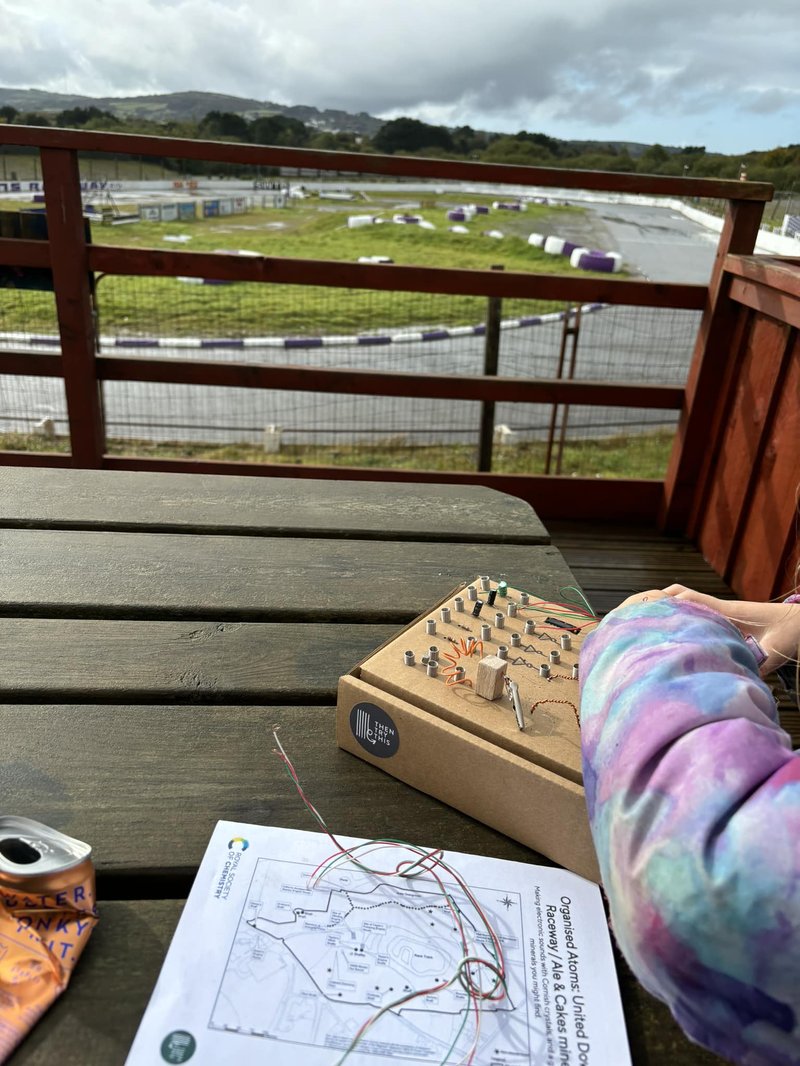
Due to the continuous rain, and the larger number of people we changed our normal flow a little from the previous Organised Atoms events we'd done. Our sheltered areas consisted of a VIP cabin, which had power, a kettle and running water - we used this to set up our synth building workshop area and general food and tea station. We also had access to the track control building, which as before we'd turned into a 'Rock lab' with microscope (a USB one connected to a Raspberry Pi and a big screen), a labelled example mineral collection, scientific analysis tools (selection of scratch test minerals, hardness charts and streak plate tiles), buckets, hammers, Geiger counters, magnifiers and a set of brushes.
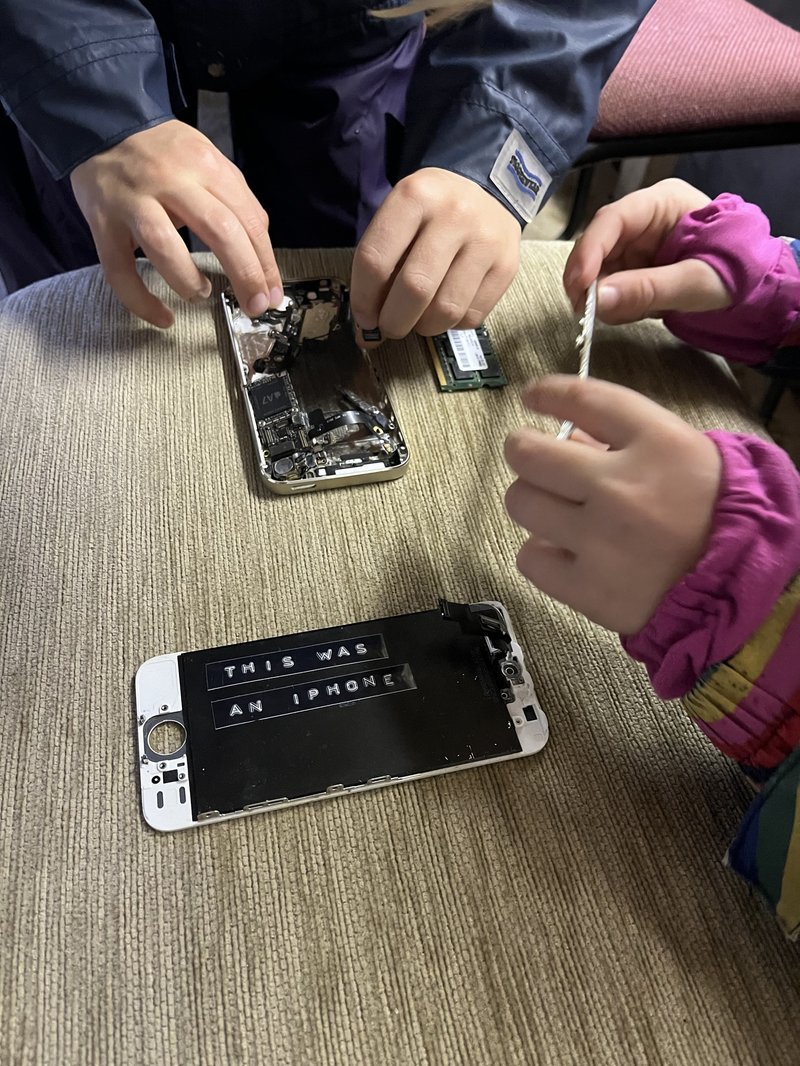
We started by splitting into two groups, the smaller ones heading to the rock lab to use the microscope on our example minerals, a smashed iPhone, and of course each others body parts. The older ones stayed in the VIP lab and started wiring up circuits to flash lights, make sounds and eventually trying using crystals (we had a small stock of usable pyrite and chalcopyrite sourced from nearby) as unstable electronic components. Based on the previous workshop where it seemed too easy to wire up the box in reverse (and damage the inverter chip) we'd remade them to put the batteries inside and have a rudimentary 'on switch' consisting of the positive wire sticking out next to the positive spring connector. This fixed the reverse polarity issue, but this time we had a few instances of short circuits - the low voltage meant it didn't cause permanent damage. This was due to the instructions needing to be clearer that each circuit is separate, and not wired on top of the previous one.
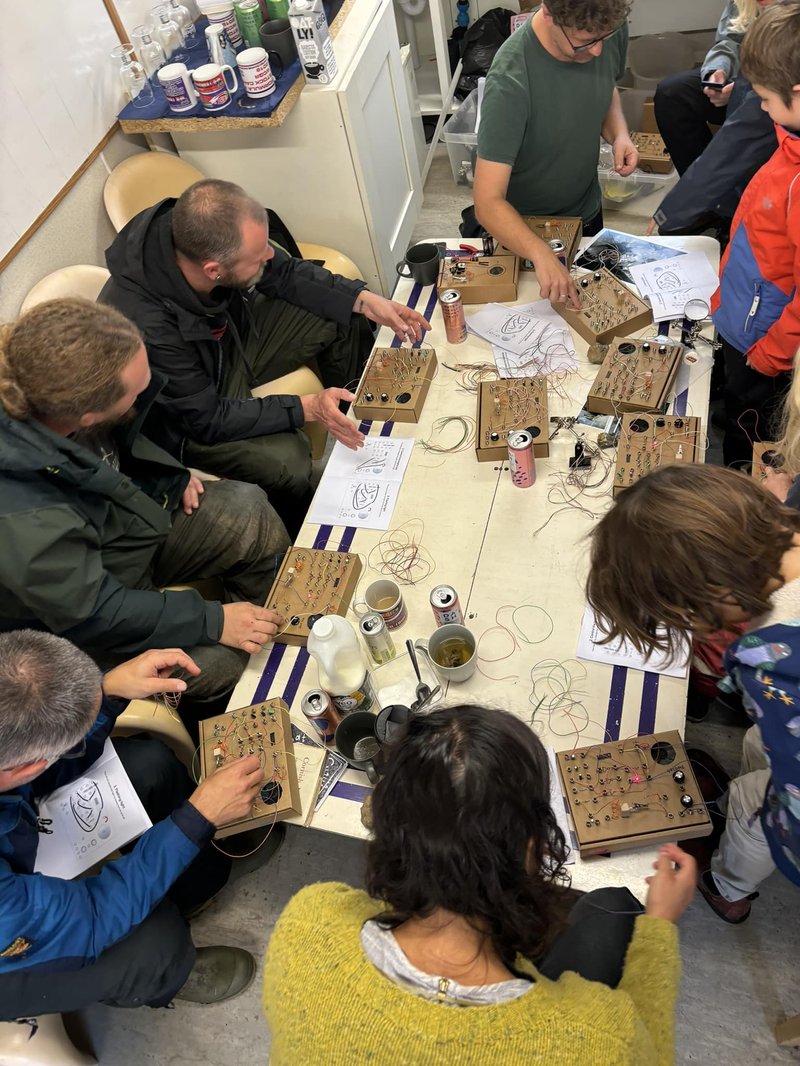
After lunch we swapped over for a little while until the general consensus was that we didn't care about the rain any more, and that the hammers were too tempting. Luckily this was also the point that the rain cleared, giving us a couple of hours to explore the site and look for specimens. The mine waste tailings here are left from the site's time as part of the "Ale and Cakes" mine in the 18th and 19th century. We avoided historically sensitive areas - there are a few remains of cobbled roads, as well as a large area of wild woodland which is part of a long running project to rewild and recover the site from the heavy metals, exotic minerals and general disruption which has been left behind.
Probably in part thanks to the rain, we found a lot of interesting minerals - washed clean and clearly visible in the surface material abundant in the car parking area, and around a mountain bike stunt park which seems to be quietly taking over part of the site. We found lots of the normal pyrites (mostly iron pyrite and chalcopyrite), some amazing dark sphalerite specimens - but also colourful veins of bright green malachite (with light blue chrysocolla) and some really nice lumps of cubic galena. We talked about how some of the minerals, like the malachite, have formed since the rocks were lifted out of the depths (below the water table) by the miners - and are now part of a cycle. Their ultimate destiny will be to sink back underground and remineralise many times over in different forms over the next thousands of years until they eventually return to their previous form. As such, by hammering and breaking apart these rocks - we play a tiny role in accelerating this healing process.
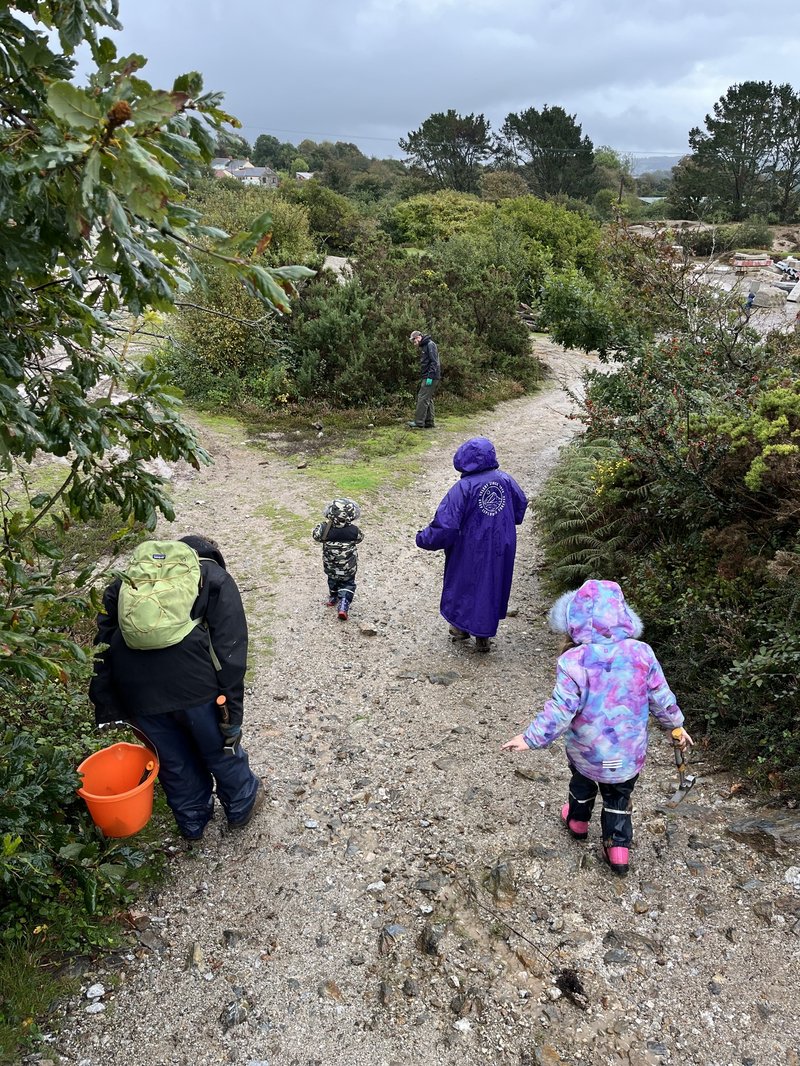
One of the nice things that happened when the clouds cleared and the view opened up, was being able to point Carn Marth in the distance, which was the high point of the mass of granite (a base of a now eroded mountain chain) the heat from which had caused the shiny mineralisation we were now pulling out of the rocks and looking at up close. We then returned to the Rock Lab to clean and examine the material we had found, trying to identify it and decide what was good for taking home.
Aided by the weather conditions, this workshop started with electronic minerals - from the cardboard synths and iPhone components, and worked backwards to the ground - and it seemed to work better than doing it the other way around. One of the best things about activities like this on the raceway is that you can easily cover a wide range of subjects, chemistry, geology, technology, history - in a context that is distant from any educational or school setting. Many of the people coming have cultural connections either with a family history of mining, or memories of watching cars smash into each other on the raceway - usually both. The Fun Palaces setting, and general approach of Rosi Jolly provide a no-nonsense low pressure setting where everyone seems to feel that they can take part, help out and figure out how to deal with situations like ridiculously wet weather. They somehow stayed for over five hours playing with different things. As before the families took home their noisy cardboard synths, booklets of circuits to try, plenty of wire and many rocks!

